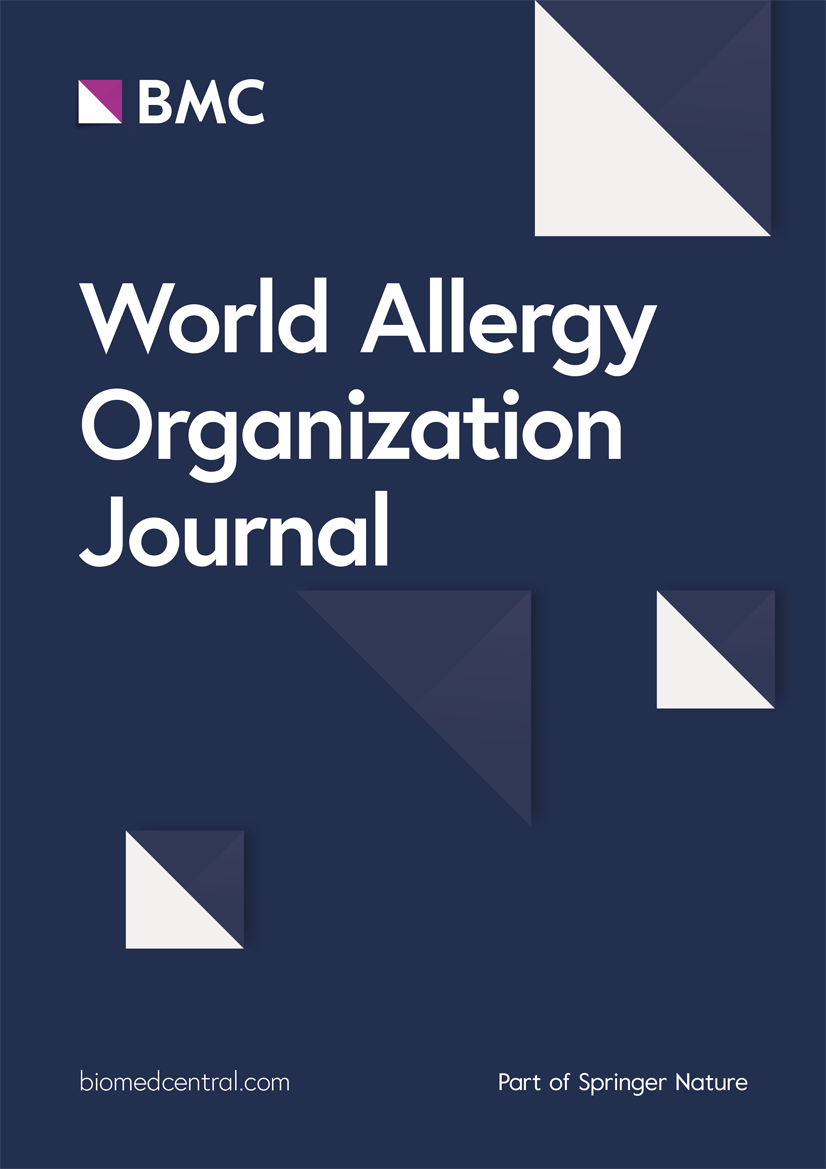孕妇和婴儿特应性皮炎的肠道微生物群和血浆代谢物:一项多组学研究。
IF 3.9
2区 医学
Q2 ALLERGY
引用次数: 0
摘要
背景:许多研究报道了婴儿肠道微生物群对出生后特应性皮炎(AD)的影响,但母体肠道微生物群和血浆代谢物在婴儿AD中的作用仍未被探索。方法:在中国广州对63名分娩后的孕妇和婴儿进行随访。收集人口统计信息、产妇粪便和血浆样本以及婴儿AD的记录。使用散弹枪宏基因组学和非靶向代谢组学分析母体肠道微生物群/代谢组和血浆代谢组。采用Logistic回归和多组学分析探讨AD组和健康组的母体肠道微生物群特征。结果:健康组孕妇肠道菌群α-多样性显著高于AD组(Shannon多样性P = 0.02, Simpson多样性P = 0.04)。健康组Faecalibacterium、Roseburia、Butyricicoccus、Ruminococcus等产生短链脂肪酸(SCFAs)的微生物,以及苯丙氨酸、酪氨酸和色氨酸生物合成途径的丰度(LDA bbb2和P P)丰富。结论:妊娠期母体肠道微生物/代谢物和血浆代谢物影响婴儿AD的后续发病。这阐明了对抗后代早期AD的新策略。本文章由计算机程序翻译,如有差异,请以英文原文为准。
Gut microbiota and plasma metabolites in pregnant mothers and infant atopic dermatitis: A multi-omics study
Background
Many studies reported the influence of infants' gut microbiota on atopic dermatitis (AD) postnatally, yet the role of maternal gut microbiota and plasma metabolites in infants’ AD remains largely unexplored.
Methods
Sixty-three pregnant mother-infants were enrolled and followed after childbirth in Guangzhou, China. Demographic information, maternal stool and plasma samples, and records for infants’ AD were collected. Maternal gut microbiota/metabolome and plasma metabolome were profiled using shotgun metagenomics and non-targeted metabolomics. Logistic regression and multi-omics analysis were used to explore characteristic maternal gut microbiota in the AD and health groups.
Results
The α-diversity of maternal gut microbiota in health group was significantly higher than AD group (Shannon diversity P = 0.02, Simpson diversity P = 0.04). Short-chain fatty acids (SCFAs) producing microorganisms, including Faecalibacterium, Roseburia, Butyricicoccus, and Ruminococcus, as well as the abundance of phenylalanine, tyrosine, and tryptophan biosynthesis pathway, were enriched in health group (LDA>2 and P < 0.05). Virulent factors (VFs) involved in immune modulation were enriched in the health group, while VFs involving in adhesin were enriched in the AD group (P < 0.05). Metabolomic analysis showed that a polyunsaturated fatty acid/linoleic acid, 13S-hydroxyoctadecadienoic, were negatively associated with AD in both the gut and plasma samples (FDR<0.05). Several other linoleic acids and flavonoids were negatively associated with AD (FDR<0.05). Neural network analysis revealed that microorganisms enriched in health group may produce these protective fatty acids.
Conclusions
Our findings show that maternal gut microorganisms/metabolites and plasma metabolites during pregnancy impact subsequent pathogenesis of infants AD. This illuminates new strategies against early AD in offspring.
求助全文
通过发布文献求助,成功后即可免费获取论文全文。
去求助
来源期刊

World Allergy Organization Journal
Immunology and Microbiology-Immunology
CiteScore
9.10
自引率
5.90%
发文量
91
审稿时长
9 weeks
期刊介绍:
The official pubication of the World Allergy Organization, the World Allergy Organization Journal (WAOjournal) publishes original mechanistic, translational, and clinical research on the topics of allergy, asthma, anaphylaxis, and clincial immunology, as well as reviews, guidelines, and position papers that contribute to the improvement of patient care. WAOjournal publishes research on the growth of allergy prevalence within the scope of single countries, country comparisons, and practical global issues and regulations, or threats to the allergy specialty. The Journal invites the submissions of all authors interested in publishing on current global problems in allergy, asthma, anaphylaxis, and immunology. Of particular interest are the immunological consequences of climate change and the subsequent systematic transformations in food habits and their consequences for the allergy/immunology discipline.
 求助内容:
求助内容: 应助结果提醒方式:
应助结果提醒方式:


